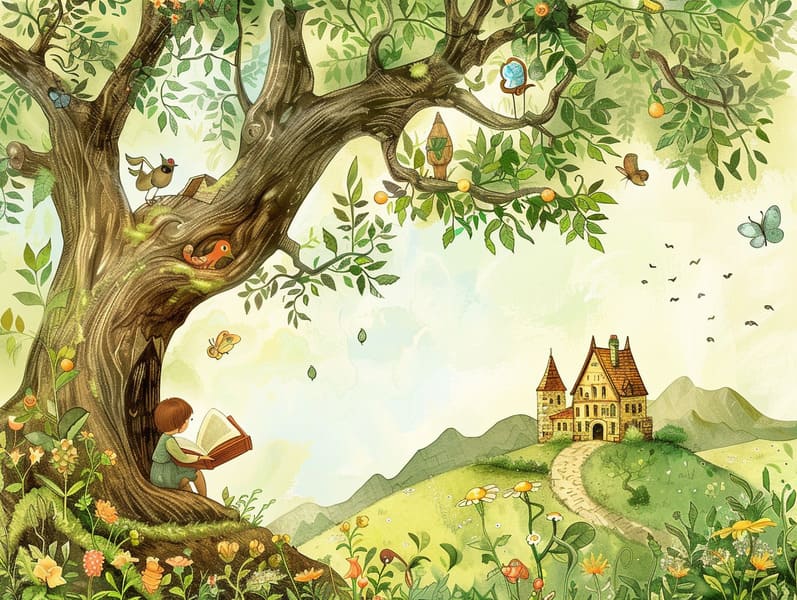The Start of Fairy Tales and the Invariable Grandeur.
The Start of Fairy Tales and the Invariable Grandeur.
Blog Article

Short fairy tales have ancient roots. These stories have been relayed from one generation to the next millennia before they were ever inscribed. They were born from a variety of societies, including American traditions. They were initially narrated among elders, often carrying themes and messages aligned with the societal norms and beliefs of the time.
The Grimm brothers, Jacob and Wilhelm Grimm, were among the first to compile and publish many of these beloved stories. Their compilation, "Grimm's Folk Tales," included stories like "The Little Glass Slipper," "Hansel and Gretel," and "Little Snow White," which have since become classics in the world of traditional fairy tales. Similarly, Hans Christian Andersen's fantastical tales, such as "The Mermaid's Tale," and "The Duckling's Story," have won hearts worldwide, securing their place in the pantheon of treasured fairy tales.
Despite being ancient, these stories remain as important as ever, especially as bedtime stories for kids. These whimsical stories are now available in many formats, including beautifully illustrated books, whimsical animations, and web-based fairy tales.
Their unwavering allure can be credited to several fascinating points:
Ethical Lessons: Ancient fairy tales often impart important moral lessons. Stories like "The Shepherd Boy and the Wolf" teach the virtue of truth, while "The Tale of the Tortoise and the Hare" point out the traits of persistence and humbleness. These narratives offer little ones clear distinctions between good and bad, helping to shape their moral compass in a kind yet meaningful way.
Compassion and Insight: Classic fairy tales frequently illustrate figures facing difficulties and adversities, fostering young readers to empathize with their struggles and support their triumphs. For instance, "Beauty's Beast" conveys the necessity of seeing beyond the surface to acknowledge the true nature of a character, advancing sympathy and understanding.
Cultural Understanding: Many old fairy tales are deeply ingrained in the cultural contexts from which they were born. Reading these tales can provide informative snapshots into different beliefs, strengthening a sense of global understanding and respect.
Creativity and Fantasy: The fantastical elements in classic fairy tales—wizardry and magic—ignite children’s imaginations. These stories move readers to extraordinary realms, encouraging fantasy dreams and a sense of mystery that continues a lifetime.
Traditional fairy tales are not only charming but also edifying. They provide magical tools in promoting various intellectual and emotional capacities in young readers. When fairy tales are narrated, they cultivate linguistic abilities by presenting new terms and meanings and elaborate sentence structures. This practice also nurtures hearing abilities and focus, as young ones concentrate deeply, excited to see what happens next.
Furthermore, conversing about the themes and characters of fairy tales can advance evaluative skills and thinking skills. Children are taught to detect patterns, guess what will happen, and comprehend cause and effect. These analyses also contribute to this site kids verbalize their thoughts and feelings, adding to their emotional intelligence.
In today’s cyber age, the availability of free fairy tales online has made these stories more accessible than ever. Websites and mobile apps supply wide arrays of bedtime fairy tales that can be read or listened on anytime, anywhere. Fairy tales told out loud are particularly prevalent, featuring an interactive way for children to experience these spellbinding stories. Voice books and read-out-loud videos take characters and settings to life, often supplemented by fantastical harmonies and instrumentals that enhance the tale-telling adventure.
The unfading fascination of classic fairy tales lies in their ability to transform to today's society while keeping hold of their core values. Contemporary revisions of these stories often spotlight more different protagonists and modern settings, making them meaningful to today’s audience. However, the essential messages of gallantry, goodness, and fairness remain unchanged, continuing to affect young readers of all ages.
Fairy tales also offer a sense of coziness and closeness. They introduce a structured narrative with a recognizable beginning, middle, and end, often concluding with the conclusion of conflicts and the triumph of morality over wickedness. This reliability can be easing for little ones, extending a sense of sturdiness in an inconstant world.
Ancient fairy tales continue to delight and inform new generations, maintaining their attraction and significance in modern society. As children's bedtime stories, they grant a perfect blend of allure and teaching, boosting moral values, empathy, and creativity. The prevalence of internet fairy tales and the in demand status of fairy tales narrated affirm that these timeless stories remain acquirable to new generations.
By retaining and relating these tales, we continue to praise the rich tapestry of human imagination and cultural heritage. Whether you are browsing a vividly illustrated book, browsing a online collection, or listening through an voice book, the mystique of famous fairy tales is always within reach. These fairy tales convey of the immortal effect of tales and its ability to tie us across time and space.
Whether you are seeing a vibrantly illustrated book, exploring a cyber library, or hearing an audio story, the beauty of children's fairy tales is always within reach.
These tales show us of the everlasting impact of storytelling and its ability to tie us across centuries and lands, creating a bond that delights and instructs alike.